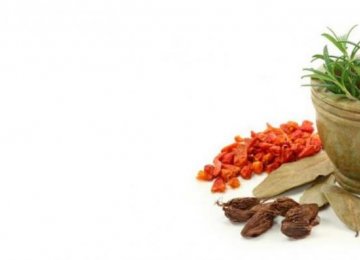Two separate MoUs were signed by the traditional medicine faculties of Austria and Hungary with the traditional medicine faculty of Tehran’s Medical Sciences University to undertake joint measures in traditional medicine, said Mahmoud Khodadoust, deputy minister for traditional medicine at the Health Ministry.
The two European nations expressed eagerness to cooperate with the Iranian university in student exchange and joint research programs, reports IRNA.
As per the agreements, researchers, professors and students will be sent to Iran to take part in workshops and training courses in Iranian traditional medicine.
Khodadoust pointed to the increasing number of articles on Iranian traditional medicine approved by the Institute for Scientific Information (ISI), the most credible international authority in the field.
“Academic development of national traditional medicine is the main step towards making our heritage globally known,” he added.
Iranian traditional medicine dates back more than 3,000 years.
Iranians were among the first to establish traditional medicine therapy. Medical knowledge of eminent Persian scientists Avicenna (980-1037 AD) and Razes (865 to 925 AD) was translated into different languages. The Canon of Medicine, an encyclopedia of medicine in five books compiled by Avicenna and completed in 1025 AD, that presents a clear and organized summary of all the medical knowledge of the time, was used as a medical textbook through the 18th century in Europe.
Currently, there are 70 traditional medicine specialists in the country, more than half of whom work at medical science universities. The rest are involved in treatment procedures at traditional medicine centers affiliated to universities.
According to researchers, climate diversity of Iran makes it a unique country to grow different species of plants. Iran has a distinctive flora and fauna and a remarkable biodiversity, including 10 biosphere reserves and various ecosystems with specific biological components. The convergence of different flora in its ecosystem, with 11 from the 13 regional floras in the world, prepares the way for developing traditional medicine in the country, Khodadoust added.
Rich Biodiversity
The number of species indicates biodiversity richness: 8,200 species of plants (of which 1,900 are endemic). Iran is also the origin of many genetic resources of the world, including commercially valuable plant species such as wheat.
Iran’s unusual phytogeography (branch of biogeography that is concerned with the geographic distribution of plant species and their influence on the earth’s surface) is due to certain factors, including diverse climate conditions, the existence of a vast central salt desert, and the presence of high barrier-like mountains such as the Zagros range.
The exploitation of natural resources on the Iranian plateau goes back 7000 years, it is said. The use of medicinal plants was the first method of treating diseases in ancient Iran and formed an important part of various cultures. It is estimated that nearly 13% of the plant flora (850-1100 species), is used as herbs in traditional medicine in Iran.
Although Iranian traditional medicine is now influenced by modern medicine, it still remains an integral part of the culture. Scientists and researchers as well as state officials have been paying more attention to traditional medicine in the past two decades. Traditional medicine is currently making efforts to gain its rightful place in the national health system.





